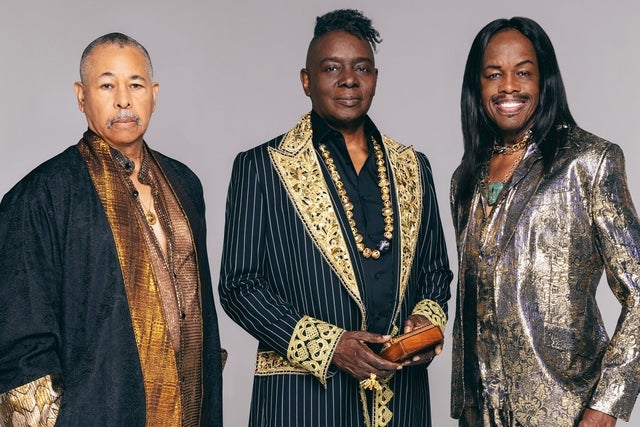Legacy in Motion
[Earth, Wind & Fire] today centers on longtime core members carrying the spirit of the late founder after his passing. The show leans on bright horns, tight rhythm guitar, and a high, airy falsetto that still glides on ballads. Expect a set built around sing-alongs like
September,
Boogie Wonderland,
Shining Star, and a spotlight moment on
Reasons. Deeper cuts from
That's the Way of the World era sometimes appear to give the groove room to breathe. The crowd often spans three generations, with dancers near the front and couples taking in the harmonies from the aisles.
Deep Roots, Small Surprises
Lesser-known nugget: the band's signature kalimba interludes still pop up between songs, echoing roots that run to West African thumb piano. Another subtle thread is a second lead voice added in recent years, thickening those stacked harmonies. Note that any talk here of songs and stage flavors is a best-guess snapshot from recent tours, not a locked blueprint.
Golden jackets and ba-dee-ya: the Earth, Wind & Fire scene
Dress the Part, Feel the Beat
You will see vintage satin jackets, glittery sneakers, and old tour tees next to sharp blazers and casual polos. Fans hum horn lines in the concourse and save their loudest voices for the "ba-dee-ya" hook on
September. During
Shining Star, there is a proud clap on two and four that spreads row by row, like a simple wave of timekeeping. Groups break into little dance circles when
Boogie Wonderland hits, with joyful moves that look practiced but stay friendly.
Rituals That Stick
Merch tables lean into the sun-and-pyramid iconography, plus retro fonts and bright album-color palettes. The overall culture feels welcoming and intergenerational, with elders nodding to the 70s Afrofuturist look and younger fans filming favorite choruses. Post-show chatter often centers on harmony blends and bass lines rather than solos, a sign that the songcraft is the star.
Brass, Bass, and Lift: how Earth, Wind & Fire build the sound
The Engine Room
Vocals sit on a blend of the lead singer's high register and sturdy supporting parts, with thick triad harmonies filling choruses. Rhythm parts are clipped and clean, with guitar on the off-beats and bass bouncing just ahead of the kick to keep the dance feel. Arrangements often stretch vamps so the horns can trade riffs, then snap back to the hook with a quick break that cues crowd claps. On ballads like
After the Love Has Gone, they leave extra air between phrases so the falsetto can float.
Subtle Switches
Live, the band may shift a song down a half-step or trim the highest notes, prioritizing blend and stamina over showy peaks. A small but telling detail: short kalimba motifs or percussion breaks mark transitions, acting like palate cleansers between eras. Lighting frames the brass hits and drum breaks in warm golds and deep blues, supporting the music rather than distracting from it.
Kindred Company: who Earth, Wind & Fire fans tend to love
Kindred Grooves
Fans who vibe with brass-forward party funk will likely enjoy
Kool & The Gang for their dance-ready hooks and similar feel-good flow.
Chicago overlaps through shared horn-driven arrangements and the long history of co-billed shows that trade tight charts for big sing-alongs. If you chase smooth soul colors and warm keys,
Stevie Wonder lands in the same lane of rich harmony and pocket. For fans who crave virtuoso horn stabs and deep-pocket drums,
Tower of Power hits that precision-funk sweet spot.
Why It Aligns
Those drawn to family-band energy and decades-spanning R&B might also connect with
The Isley Brothers, where guitar heat meets satin vocals. Each of these acts values groove-first writing and show-band polish, which mirrors how [Earth, Wind & Fire] keep the room moving while honoring the songs.



